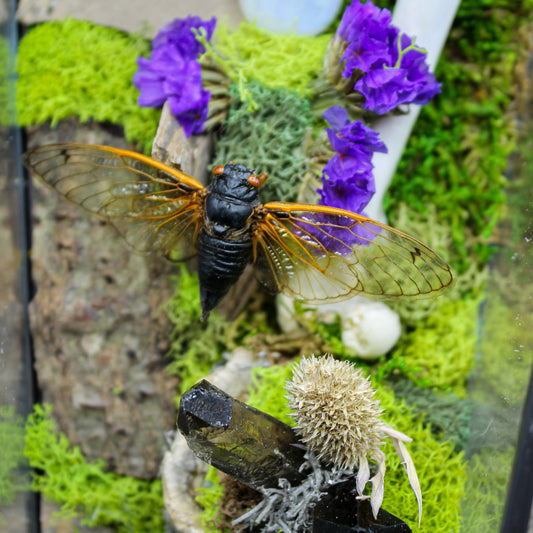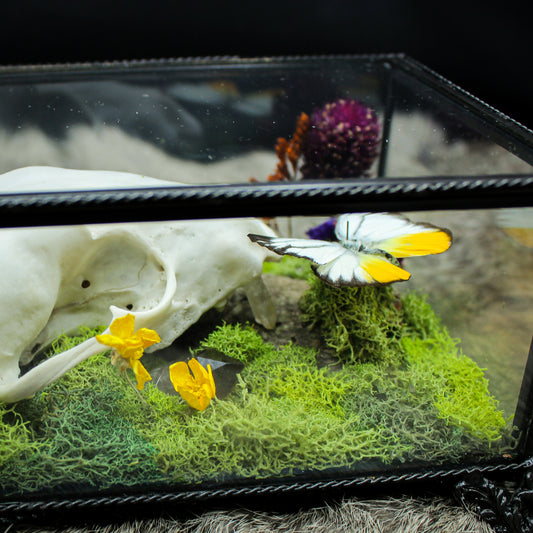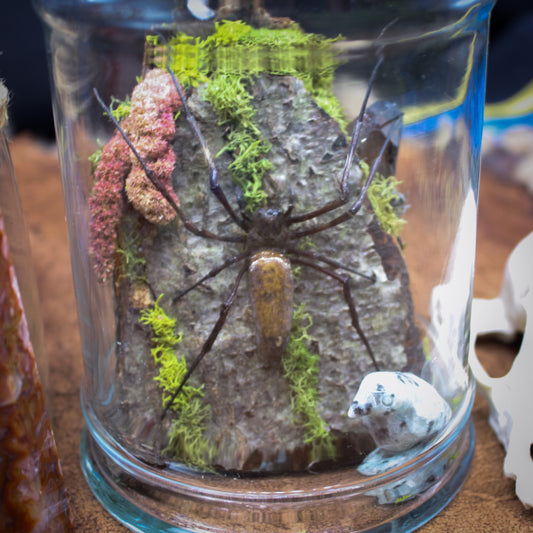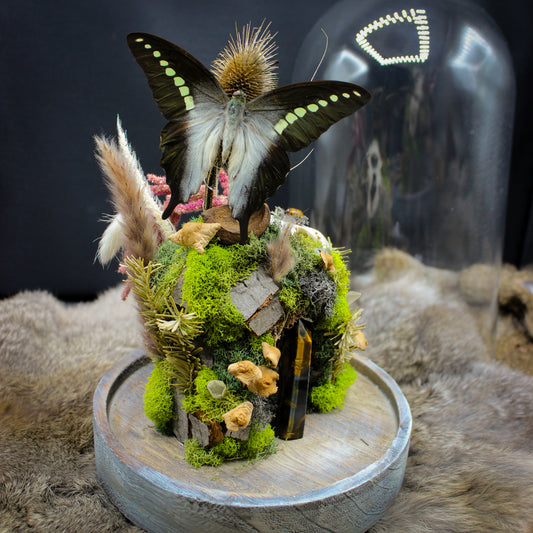
Collecting & Cleaning Animal Bones: 5 Best Practices
Making natural curiosities requires a lot of work and time. Having a plan and knowing what you will need before you go looking for bones is the best way to insure success. Let us help you get ready with this simple list of the 5 best practices for collecting and cleaning animal bones.
Supplies:
- Gloves, Glasses, & Mask
- Plastic Bags/Garbage bags
- Sharp Knife
- Box or Tub
- 30% Hydrogen Peroxide (40v Hair Bleach)
1. Knowing Local and Federal Laws
ALWAYS CHECK LAWS BEFORE YOU START COLLECTING! It is important to know what you can and can not collect in your area to avoid getting into any legal trouble. Make sure you look up what animals are protected in your area and keep in mind the Migratory Bird Act. In a list of best practices this seems like the most important next to safety.
2. Safety Precautions When Collecting Bones
It is no secret that bones come from dead things, and dead things usually come with mold, fungi, bacteria, ect. It's best to avoid these things when possible while collecting and cleaning. Gloves and a mask go a long way in keeping collectors safe from anything that my want to hurt them. Storing collected bones and remains in closed plastic bags and putting them in a tub or box for transport keeps exposure down when traveling. Finally, ALWYAS WASH YOUR HANDS.
3. Finding Bones To Clean
When you go looking for bones to clean, it can seem like looking for a needle in a hay stack. Finding shed antlers, hunter dump sites, and leftover meals is't as easy as one might expect. Not to mention how easy it is to get turned around in the woods. Always makes sure you are on public property or you have permission to forage on privet lands. Being aware of your surroundings and making sure someone knows where you are at all time is a key factor in bone hunting safety.
You may find that foraging for road kill is more productive on the bone front. If you walk along a road side long enough you are going to find bones, but this comes with it's own set of dangers. Just like the animals you collect, you can be struck by a vehicle. Always make sure the road is clear before stepping out to collect remains. We don't recommend collecting on roads like interstates or merging ramps. Theses areas are high speed and can be very dangerous to pedestrians.
Once you have found remains you want to collect, dawn your mask and gloves. Grab your bags and start collecting. Dry remains will be easy and the least pungent to collect. Theses are bones that are completely "clean" when you find them. No flesh or active decomposition. Fresh road kill will not smell...yet, but it will probably be the most messy, along with actively decomposing remains. ( We would typically leave actively decomposing remains to do their thing. They feed the scavengers in the area and can be very messy. We can come back for what left in a week or so.)
Use your knife to remove anything you may not want if you are not interested in the whole animal. Place the remains in the box or tub and transport them to your wherever you will be cleaning them.
4. How should you clean animal bones?
So now you have collected your bones! Next, you want to get them cleaned up. There are a few options for this.
Step 1:
Step 2:
Step 3:
5. What to Avoid
Most of collecting in common since. Don't pick up dead things and then eat your lunch so on and so forth. However, there are a few things that are commonly thought of as correct.
Boiling Bones
Bleaching Bones
Not Drying Bones
Make sure bones are completely dry before you display. Putting moist bones in a cabinet can result in mold. As can laving bones to dry in a moist environment. Make sure the drying space is dry and ventilated.
The Time It Takes
Don't have time to go through the process? Or, maybe you are eager to start your collection now? We have bone and insect displays for the dark decor home you always wanted, and bone and stone jewelry to adorn your body as well!









